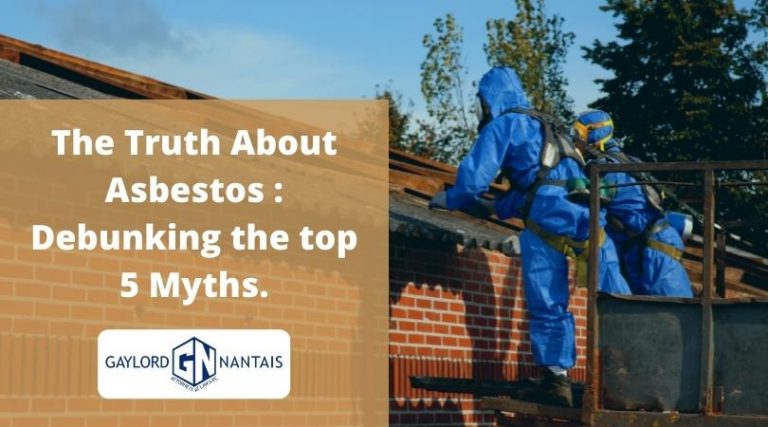Asbestos has been a subject of controversy for many years due to its toxic properties. Despite being banned in many countries, some misconceptions about asbestos continue to persist. One common myth is that asbestos is only dangerous if it is disturbed or damaged. The truth is that even if asbestos-containing materials are in good condition, they can still release fibers into the air that can be harmful when inhaled.
At one point, asbestos was widely used in construction and industrial applications due to its insulating properties and fire resistance. However, over time it became clear that exposure to asbestos could lead to serious health issues, including lung cancer and mesothelioma. Despite this, there are still many myths and misconceptions surrounding asbestos that need to be debunked in order to protect people from its harmful effects.
Myth #1: Asbestos is Only Dangerous if It’s Disturbed
This is a common misconception that can be dangerous. Asbestos fibers are tiny and easily inhaled, and even low levels of exposure over time can cause serious health problems. In fact, the World Health Organization (WHO) states that there is no safe level of exposure to asbestos.
Myth #2: Asbestos Has Been Banned Everywhere
While many countries have banned the use of asbestos, it is still legal in some parts of the world. In the United States, for example, asbestos is still allowed in some products as long as it makes up less than 1% of the product. It’s important to be aware of this fact and take precautions when working with materials that may contain asbestos.
Myth #3: Asbestos is Only a Problem for Construction Workers
While construction workers are certainly at risk of asbestos exposure, they are not the only ones. Asbestos can be found in a wide range of products, including insulation, roofing materials, and even some household items. Anyone who works with or around these products, or who lives in a building with asbestos-containing materials, is at risk of exposure.
Myth #4: Asbestos is Easy to Identify
Unfortunately, this is not the case. Asbestos fibers are too small to be seen with the naked eye, and many materials that contain asbestos look identical to those that don’t. It’s important to have materials tested for asbestos by a trained professional in order to determine whether or not they contain the dangerous fibers.
Myth #5: Asbestos Only Causes Lung Cancer
While lung cancer is certainly a risk of asbestos exposure, it is not the only one. Asbestos can also cause mesothelioma, a rare and aggressive form of cancer that affects the lining of the lungs, chest, and abdomen. In addition, asbestos exposure can cause asbestosis, a chronic lung condition that can make it difficult to breathe.
Protecting Yourself from Asbestos Exposure
Now that we’ve debunked some common myths about asbestos, it’s important to take steps to protect yourself from exposure. If you work with or around materials that may contain asbestos, make sure to wear protective gear like gloves, masks, and respirators. If you’re renovating a home or building, have it tested for asbestos before beginning work. And if you suspect that you’ve been exposed to asbestos, seek medical attention right away.
Conclusion
Asbestos exposure is a serious health risk that should not be taken lightly. By debunking common myths about asbestos and taking steps to protect ourselves, we can minimize our risk of exposure and stay safe and healthy. Remember, there is no safe level of exposure to asbestos, so it’s always better to be safe than sorry.
